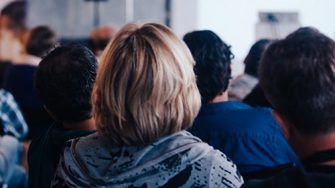
2023 has been a great year packed with nine inspiring Vaegan seminars.
On 17 February 2023, we were delighted to host not one, but two seminars, starting with Professor Robert Shanks (University of Pittsburgh) who spoke about how Pseudomonas aeruginosa causes severe ocular infection and contact lens associated keratitis. His team has characterized clinical isolates with intact and mutant lasR genes and found that the frequency of lasR mutant P. aeruginosa is increased among keratitis isolates.
Later that day, Professor Fiona Henriquez (University of the West of Scotland) spoke about her career as a microbiologist and she has been on a journey to develop cross-sector collaborations and to identify pathways to impact for the prevention and treatment of Acanthamoeba keratitis.
On 3 March 2023, Professor David Mackey (University of Tasmania, Australia) talked about the looming Epidemic of Myopia and how we need more research into the epidemiology and prevention of myopia in Australia. He also discussed how in Western Australia, his team has continued to investigate the association of myopia and lack of time outdoors in the Raine and Busselton Studies.
On 2 June 2023, Dr Josefine E Nielsen (Stanford University) discussed how and why differing molecular features between different peptoid candidates affects antimicrobial activity and selectivity, specifically, the self-assembly of the most effective peptoids into discrete micellar structures such as ellipsoidal micelles comprising ~100 peptoid molecules per micelle, or helical bundles comprising 2-4 peptoid molecules per bundle.
On 28 July 2023, A/Prof Takehiro Nagai (Tokyo Institute of Technology) gave us an immersive look at the perception of surface gloss and translucency and how colour attributes interact with perceptual experiences of surfaces and materials.
On 25 August 2023, Dr Sarika Gopalakrishnan (Envision Research Institute) showed us how simple image processing filers for head-mounted augmented reality devices can improve visual acuity in users.
Then, on 13 October 2023, Angela Smith (Moorfields Eye Hospital) informed us about their research and the value of volunteer handholding support to patients in hospital scheduled to undergo surgery.
On 27 October 2023, Dr Jim Kokkinakis (Visiting academic at UNSW Sydney) gave us a look at how some skin lipids can be very toxic to the tear film and the ocular surface. Applying a skin swab on the lid margin demonstrated not only tear film break up but also activation of the meibomian glands.
Finally, on 24 November 2023, Professor Thomas Millar (WSU) and Associate Professor Philip Anderton (Visiting academic, UNSW Sydney) provided attendees with a refreshing insight into the life, research, and passions of Vaegan himself.
